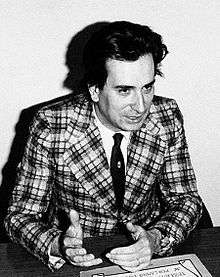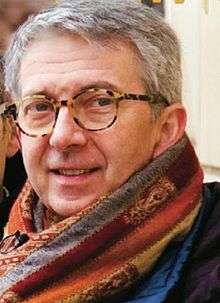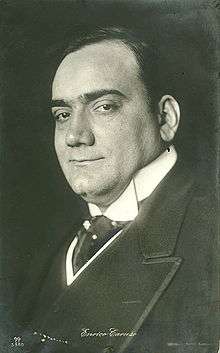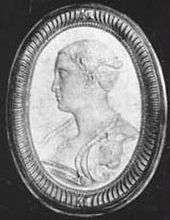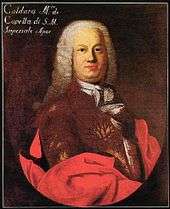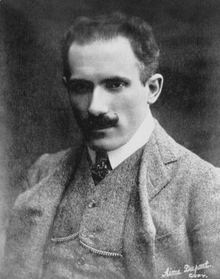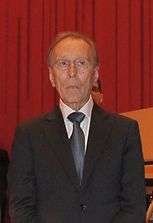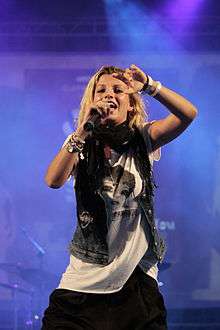Italians
|
| |
| Total population | |
|---|---|
|
c. 135 million (Italian citizens: c. 60 million; Italian ancestry: c. 75 million) | |
| Regions with significant populations | |
|
| |
| 23,047,494[1] | |
| 20,500,000[1] | |
| 17,250,211[2] | |
| 1,736,766[3] | |
| 1,530,563[1] | |
| 1,488,425[4] | |
| 1,400,000[5] | |
| 1,055,220[1] | |
| 916,121[6] | |
| 830,000[7] | |
| 545,274[8] | |
| 451.825[9] | |
| 184,997[1] | |
| 130,000[10] | |
| 85,000[11] | |
| 77,400[1] | |
| 38,694[1] | |
| 29.287[12] | |
| 19,000[13] | |
| 17,807[14] | |
| 3,503[15] | |
| 3,203[16] | |
| Languages | |
| Italian and other languages (Sicilian · Istriot · Neapolitan · Corsican · Sardinian · Ladin · Piedmontese · Ligurian · Emilian-Romagnol · Lombard · Venetian · Friulan · Romansh) | |
| Religion | |
| Roman Catholic (predominantly)[17] | |
| Related ethnic groups | |
| other Romance peoples, Greeks, Austrians and Swiss people | |
Italians (Italian: italiani [itaˈljaːni]) are a nation and ethnic group native to Italy who share a common Italian culture, ancestry and speak the Italian language as a mother tongue.[18][19][20] Legally, Italians are citizens of the Italian Republic, regardless of ancestry or country of residence (though the principle of jus sanguinis is used extensively and arguably more favourably in the Italian nationality law), and are distinguished from people of Italian descent and from ethnic Italians living in territories adjacent to the Italian Peninsula.[21][22]
In 2014, in addition to about 55 million Italians in Italy (91% of Italian population),[23] Italian-speaking autonomous groups are found in neighbouring countries: about half a million in Switzerland, a large population in France,[24] and smaller groups in Slovenia and Croatia, primarily in Istria and Dalmatia. Because of wide-ranging diaspora, about 5 million Italian citizens[25] and nearly 80 million people of full or part Italian ancestry[26] live outside of Italy, most notably in South America, North America, Australia, and parts of Europe.
Italians have greatly influenced and contributed to science, arts, technology, cuisine, sports, jurisprudence and banking[27] both abroad and worldwide.[28] Italian people are generally known for their localism, both regionalist and municipalist,[29] attention to clothing and family values.[30]
Name
The term Italian is at least three thousand years old and has a history that goes back to pre-Roman Italy. According to one of the more common explanations, the term Italia, from Latin: Italia,[31] was borrowed through Greek from the Oscan Víteliú, meaning "land of young cattle" (cf. Lat vitulus "calf", Umb vitlo "calf").[32] The bull was a symbol of the southern Italic tribes and was often depicted goring the Roman wolf as a defiant symbol of free Italy during the Social War. Greek historian Dionysius of Halicarnassus states this account together with the legend that Italy was named after Italus,[33] mentioned also by Aristotle[34] and Thucydides.[35]
History
Roman era

The Etruscan civilization reached its peak about the 7th century, but by 509 BC, when the Romans overthrew their Etruscan monarchs, its control in Italy was on the wane. By 350 BC, after a series of wars with both Greeks and Etruscans, the Latins, with Rome as their capital, gained the ascendancy by 272 BC, and they managed to unite the entire Italian peninsula.
This period of unification was followed by one of conquest in the Mediterranean, beginning with the First Punic War against Carthage. In the course of the century-long struggle against Carthage, the Romans conquered Sicily, Sardinia and Corsica. Finally, in 146 BC, at the conclusion of the Third Punic War, with Carthage completely destroyed and its inhabitants enslaved, Rome became the dominant power in the Mediterranean. From its inception, Rome was a republican city-state, but four famous civil conflicts destroyed the republic: Lucius Cornelius Sulla against Gaius Marius and his son (88–82 BC), Julius Caesar against Pompey (49–45 BC), Marcus Junius Brutus and Gaius Cassius Longinus against Mark Antony and Octavian (43 BC), and Mark Antony against Octavian.
Octavian, the final victor (31 BC), was accorded the title of Augustus by the Senate and thereby became the first Roman emperor. Augustus created for the first time an administrative region called Italia with inhabitants called "Italicus populus", stretching from the Alps to Sicily: for this reason historians like Emilio Gentile called him Father of Italians.[36]
Under imperial rule, Rome undertook many conquests that brought Roman law, Roman administration, and Pax Romana to an area extending from the Atlantic to the Rhine, to the British Isles, to the Iberian Peninsula and large parts of North Africa, and to the Middle East as far as the Euphrates.
After two centuries of successful rule, in the 3rd century AD, Rome was threatened by internal discord and menaced by Germanic and Asian invaders, commonly called barbarians (from the Latin word barbari, "foreigners"). Emperor Diocletian's administrative division of the empire into two parts in 285 provided only temporary relief; it became permanent in 395. In 313, Emperor Constantine accepted Christianity, and churches thereafter rose throughout the empire. However, he also moved his capital from Rome to Constantinople, greatly reducing the importance of the former. The last Western emperor, Romulus Augustulus, was deposed in 476 by a Germanic foederati general in Italy, Odoacer. His defeat marked the end of the western part of the Roman Empire. During most of the period from the fall of Rome until the Kingdom of Italy was established in 1861, the peninsula was divided into several smaller states.
The Middle Ages
Odoacer ruled well for 13 years after gaining control of Italy in 476. Then he was attacked and defeated by Theodoric, the king of another Germanic tribe, the Ostrogoths. Theodoric and Odoacer ruled jointly until 493, when Theodoric murdered Odoacer. Theodoric continued to rule Italy with an army of Ostrogoths and a government that was mostly Italian. After the death of Theodoric in 526, the kingdom began to grow weak. By 553, emperor Justinian I expelled the Ostrogoths. The old Roman Empire was mostly united again, even if at the price of the total destruction of the Italian peninsula (Rome –under Augustus the first "one million inhabitants" city in the world– was reduced to a small village of just one thousand inhabitants). But Byzantine rule in Italy collapsed again by 572 as a result of invasions by another Germanic tribe, the Lombards.
During the 5th and 6th centuries, the popes increased their influence in both religious and political matters in Italy. It was usually the popes who led attempts to protect Italy from invasion or to soften foreign rule. For about 200 years the popes opposed attempts by the Lombards, who had captured most of Italy, to take over Rome as well. The popes finally defeated the Lombards with the aid of two Frankish kings, Pepin the Short and Charlemagne. Using land won for them by Pepin in 756, the popes established political rule in what were called the Papal States in central Italy.
The Lombards remained a threat to papal power, however, until they were crushed by Charlemagne in 774. Charlemagne added the Kingdom of the Lombards to his vast realm. In recognition of Charlemagne's power, and to cement the church's alliance with him, Charlemagne was crowned emperor of the Romans by Pope Leo III in 800.[37] After Charlemagne's death in 814, his son Louis the Pious succeeded him. Louis divided the empire among his sons, who fought each other for territory. Such battles continued until Otto the Great, the king of Germany, was crowned emperor in 962. This marked the beginning of what later was called the Holy Roman Empire.
Rise of the city-states and the Renaissance

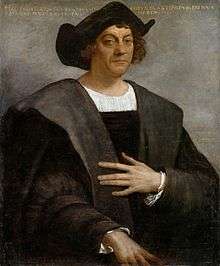
From the 11th century on, Italian cities began to grow rapidly in independence and importance. They became centres of political life, banking, and foreign trade. Some became wealthy, and many, including Florence, Rome, Genoa, Milan, Pisa, Siena and Venice, grew into nearly independent city-states. Each had its own foreign policy and political life. They all resisted the efforts of noblemen and emperors to control them.
During the 14th and 15th centuries, some Italian city-states ranked among the most important powers of Europe. Venice, in particular, had become a major maritime power, and the city-states as a group acted as a conduit for goods from the Byzantine and Islamic empires. In this capacity, they provided great impetus to the developing Renaissance, began in Florence in the 14th century,[38] and led to an unparalleled flourishing of the arts, literature, music, and science.
However, the city-states were often troubled by violent disagreements among their citizens. The most famous division was between the Guelphs and Ghibellines. The Guelphs supported supreme rule by the pope, and the Ghibellines favoured the emperor. City-states often took sides and waged war against each other. During the Renaissance, Italy became an even more attractive prize to foreign conquerors. After some city-states asked for outside help in settling disputes with their neighbours, King Charles VIII of France marched into Italy in 1494. Charles soon withdrew, but he had shown that the Italian peninsula could be conquered because they were not united. After the Italian Wars, Spain emerged as the dominant force in the region. Venice, Milan, and other city-states retained at least some of their former greatness during this period, as did Savoy-Piedmont, protected by the Alps and well defended by its vigorous rulers.
The French Revolution and Napoleon

The French Revolution and Napoleon influenced Italy more deeply than they affected any other country of Europe, except France. The French Revolution began in 1789 and immediately found supporters among the Italian people. The local Italian rulers, sensing danger in their own country, drew closer to the European kings who opposed France. After the French king was overthrown and France became a republic, secret clubs favouring an Italian republic were formed throughout Italy. The armies of the French Republic began to move across Europe. In 1796, Napoleon Bonaparte led a French army into northern Italy and drove out the Austrian rulers. Once again, Italy was the scene of battle between the Habsburgs and the French. Wherever France conquered, Italian republics were set up, with constitutions and legal reforms. Napoleon made himself emperor in 1804, and part of northern and central Italy was unified under the name of the Kingdom of Italy, with Napoleon as king. The rest of northern and central Italy was annexed by France. Only Sicily and the island of Sardinia, which had been ceded to the House of Savoy in 1720 and had been under their rule ever since, remained free of French control.
French domination lasted less than 20 years, and it differed from previous foreign control of the Italian peninsula. In spite of heavy taxation and frequent harshness, the French introduced representative assemblies and new laws that were the same for all parts of the country. For the first time since the days of ancient Rome, Italians of different regions used the same money and served in the same army. Many Italians began to see the possibility of a united Italy free of foreign control.
The Kingdom of Italy
After the battle of Waterloo, the reaction set in with the Congress of Vienna allowed the restoration of many of the old rulers and systems under Austrian domination. The concept of nationalism continued strong, however, and sporadic outbreaks led by such inveterate reformers as Giuseppe Mazzini occurred in several parts of the peninsula down to 1848–49. This Risorgimento movement was brought to a successful conclusion under the able guidance of Camillo Benso, conte di Cavour, prime minister of Piedmont.
Cavour managed to unite most of Italy under the headship of Victor Emmanuel II of the house of Savoy, and on 17 March 1861, the Kingdom of Italy was proclaimed with Victor Emmanuel II as king. Giuseppe Garibaldi, the popular republican hero of Italy, contributed much to this achievement and to the subsequent incorporation of the Papal States under the Italian monarch. Italian troops occupied Rome in 1870, and in July 1871, this formally became the capital of the kingdom. Pope Pius IX, a longtime rival of Italian kings, considered himself a "prisoner" of the Vatican and refused to cooperate with the royal administration. Only in 1929 the Roman Pope accepted the unified Italy with Rome as capital.
In the decades following unification, Italy started to create colonies in Africa, and under Benito Mussolini's fascism conquered Ethiopia founding in 1936 the Italian Empire. World War I completed the process of Italian unification, with the annexation of Trieste, Istria, Trentino-Alto Adige and Zara. The Italians grew to 45 millions in 1940 and the land, whose economy had been until that time based upon agriculture, started its industrial development, mainly in northern Italy. But World War II soon destroyed Italy and its colonial power.
The Italian Republic
Between 1945 and 1948, the outlines of a new Italy began to appear. Victor Emmanuel III gave up the throne on 9 May 1946, and his son, Umberto II, became king. On 2 June Italy held its first free election after 20 years of Fascist rule (the so-called Ventennio). Italians chose a republic to replace the monarchy, which had been closely associated with Fascism. They elected a Constituent Assembly to prepare a new democratic constitution. The Assembly approved the constitution in 1947, which came into force since 1 January 1948.
Culture
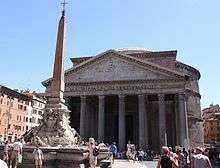

From the Magna Graecia period to the 17th century, the inhabitants of the Italian peninsula were at the forefront of Western culture, being the fulcrum and origin of Magna Graecia, Ancient Rome, the Roman Catholic Church, Humanism, the Renaissance and Baroque.
Italy also became a seat of great formal learning in 1088 with the establishment of the University of Bologna, the first university in the Western World.[39] Many other Italian universities soon followed. For example, the Schola Medica Salernitana, in southern Italy, was the first medical school in Europe.[40] These great centres of learning presaged the Rinascimento: the European Renaissance began in Italy and was fueled throughout Europe by Italian painters, sculptors, architects, scientists, literature masters and music composers. Italy continued its leading cultural role through the Baroque period and into the Romantic period, when its dominance in painting and sculpture diminished but the Italians re-established a strong presence in music.
Italian explorers and navigators in the 15th and 16th centuries left a perennial mark on human history with the modern "discovery of America", due to Christopher Columbus. In addition, the name of the American continents derives from the geographer Amerigo Vespucci's first name. Also noted, is explorer Marco Polo who travelled extensively throughout the eastern world recording his travels.
Due to comparatively late national unification, and the historical autonomy of the regions that comprise the Italian peninsula, many traditions and customs of the Italians can be identified by their regions of origin. Despite the political and social isolation of these regions, Italy's contributions to the cultural and historical heritage of the Western world remain immense. Famous elements of Italian culture are its opera and music, its iconic gastronomy and food, which are commonly regarded as amongst the most popular in the world,[41] its cinema (with filmmakers such as Federico Fellini, Michelangelo Antonioni, Mario Monicelli, Sergio Leone, Alberto Sordi, etc.), its collections of priceless works of art and its fashion (Milan and Florence are regarded as some of the few fashion capitals of the world).
Philosophy


Over the ages Italian literature had a vast influence on Western philosophy, beginning with the Greeks and Romans, and going onto Renaissance, The Enlightenment and modern philosophy. Italian Medieval philosophy was mainly Christian, and included several important philosophers and theologians such as St Thomas Aquinas. Aquinas was the student of Albert the Great, a brilliant Dominican experimentalist, much like the Franciscan, Roger Bacon of Oxford in the 13th century. Aquinas reintroduced Aristotelian philosophy to Christianity. He believed that there was no contradiction between faith and secular reason. He believed that Aristotle had achieved the pinnacle in the human striving for truth and thus adopted Aristotle's philosophy as a framework in constructing his theological and philosophical outlook. He was a professor at the prestigious University of Paris.
Italy was also affected by the enlightenment, a movement which was a consequence of the Renaissance and changed the road of Italian philosophy.[42] Followers of the group often met to discuss in private salons and coffeehouses, notably in the cities of Milan, Rome and Venice. Cities with important universities such as Padua, Bologna and Naples, however, also remained great centres of scholarship and the intellect, with several philosophers such as Giambattista Vico (1668–1744) (who is widely regarded as being the founder of modern Italian philosophy)[43] and Antonio Genovesi.[42] Italian society also dramatically changed during the Enlightenment, with rulers such as Leopold II of Tuscany abolishing the death penalty. The church's power was significantly reduced, and it was a period of great thought and invention, with scientists such as Alessandro Volta and Luigi Galvani discovering new things and greatly contributing to Western science.[42] Cesare Beccaria was also one of the greatest Italian Enlightenment writers and now considered one of the fathers of classical criminal theory as well as modern penology.[44] Beccaria is famous for his masterpiece On Crimes and Punishments (1764), a treatise (later translated into 22 languages) that served as one of the earliest prominent condemnations of torture and the death penalty and thus a landmark work in anti-death penalty philosophy.[42]
Some of the most prominent philosophies and ideologies in Italy during the late 19th and early to mid-20th centuries include anarchism, communism, socialism, futurism, fascism, and Christian democracy. Both futurism and fascism (in its original form, now often distinguished as Italian fascism) were developed in Italy at this time. From the 1920s to the 1940s, Italian Fascism was the official philosophy and ideology of the Italian government. Giovanni Gentile was one of the most significant 20th-century Idealist/Fascist philosophers. Meanwhile, anarchism, communism, and socialism, though not originating in Italy, took significant hold in Italy during the early 20th century, with the country producing numerous significant Italian anarchists, socialists, and communists. In addition, anarcho-communism first fully formed into its modern strain within the Italian section of the First International.[45] Antonio Gramsci remains an important philosopher within Marxist and communist theory, credited with creating the theory of cultural hegemony.
Literature
Italian literature may be unearthed back to the Middle Ages, with the most significant poets of the period being Dante Alighieri, Petrarch, and Giovanni Boccaccio. During the Renaissance, humanists such as Leonardo Bruni, Coluccio Salutati and Niccolò Machiavelli were great collectors of antique manuscripts. Many worked for the organized Church and were in holy orders (like Petrarch), while others were lawyers and chancellors of Italian cities, like Petrarch's disciple, Salutati, the Chancellor of Florence, and thus had access to book copying workshops. One of the most remarkable poets of the early 19 and 20th century writers was Giacomo Leopardi, who is widely acknowledged to be one of the most radical and challenging thinkers of the 19th century.[46][47] Italo Svevo, the author of La coscienza di Zeno (1923), and Luigi Pirandello (winner of the 1934 Nobel Prize in Literature), who explored the shifting nature of reality in his prose fiction and such plays as Sei personaggi in cerca d'autore (Six Characters in Search of an Author, 1921). Federigo Tozzi and Giuseppe Ungaretti were well-known novelists, critically appreciated only in recent years, and regarded one of the forerunners of existentialism in the European novel.
Law and justice
Since the Roman Empire, most western contributions to Western legal culture was the emergence of a class of Roman jurists. During the Middle Ages, St. Thomas Aquinas, the most influential western legal scholar of the period, crushed his theory of natural law in the notion of an eternal and biblical law.[48] During the Renaissance, Prof. Alberico Gentili, the founder of the science of international law, transcribed the first scripture on public international law and separated secularism from canon law and Roman Catholic theology. Enlightenment's greatest legal theorists, Cesare Beccaria, Giambattista Vico and Francesco Mario Pagano, are well remembered for their legal mechanisms, particularly on criminal law. Francesco Carrara was one of the foremost European death penalty abolition and criminal lawyers of the 19th century. During the last periods, numerous Italians have been recognised as the most triumphant prosecutor magistrates.
Science and technology
Italians have been the central figures of countless inventions and discoveries and they made many predominant contributions to various fields. During the Renaissance, Italian polymaths such as Leonardo da Vinci (1452–1519), Michelangelo (1475–1564) and Leon Battista Alberti (1404–72) made important contributions to a variety of fields, including biology, architecture, and engineering. Galileo Galilei (1564–1642), a physicist, mathematician and astronomer, played a major role in the Scientific Revolution. His achievements include the invention of the thermometer and key improvements to the telescope and consequent astronomical observations, and ultimately the triumph of Copernicanism over the Ptolemaic model. Other astronomers such as Giovanni Domenico Cassini (1625–1712) and Giovanni Schiaparelli (1835–1910) made many important discoveries about the Solar System. Physicist Enrico Fermi (1901–54), a Nobel prize laureate, led the team in Chicago that built the first nuclear reactor and is also noted for his many other contributions to physics, including the co-development of the quantum theory. He and a number of Italian physicists were forced to leave Italy in the 1930s by Fascist laws against Jews, including Emilio G. Segrè (1905–89) (who discovered the elements technetium and astatine, and the antiproton),[49] and Bruno Rossi (1905–93), a pioneer in Cosmic Rays and X-ray astronomy. Other prominent physicists and scientists include: Amedeo Avogadro (most noted for his contributions to molecular theory, in particular Avogadro's law and the Avogadro constant), Evangelista Torricelli (inventor of the barometer), Alessandro Volta (inventor of the electric battery), Guglielmo Marconi (inventor of radio), Antonio Meucci (known for developing a voice-communication apparatus, often credited as the inventor of the first telephone before even Alexander Graham Bell),[50][51] Galileo Ferraris (one of the pioneers of AC power system, invented the first induction motor), Ettore Majorana (who discovered the Majorana fermions), and Carlo Rubbia (1984 Nobel Prize in Physics for work leading to the discovery of the W and Z particles at CERN).
In biology, Francesco Redi was the first to challenge the theory of spontaneous generation by demonstrating that maggots come from eggs of flies and he described 180 parasites in detail; Marcello Malpighi founded microscopic anatomy; Lazzaro Spallanzani conducted important research in bodily functions, animal reproduction, and cellular theory; Camillo Golgi, whose many achievements include the discovery of the Golgi complex, paved the way to the acceptance of the Neuron doctrine; Rita Levi-Montalcini discovered the nerve growth factor (awarded 1986 Nobel Prize in Physiology or Medicine); Angelo Ruffini first described the Ruffini endings and was known for his work in histology and embryology; Filippo Pacini discovered the Pacinian corpuscles and was the first to isolate the cholera bacillus Vibrio cholerae in 1854, before Robert Koch's more widely accepted discoveries 30 years later. In chemistry, Giulio Natta received the Nobel Prize in Chemistry in 1963 for his work on high polymers. Giuseppe Occhialini received the Wolf Prize in Physics for the discovery of the pion or pi-meson decay in 1947.
-

Leonardo da Vinci, a father of paleontology and architecture, has been the most influential polymath
-

Galileo Galilei, the father of science and modern physics, one of the key figures in astronomy, pioneered the thermometer and made significant works in other fields of science
-

Elena Cornaro Piscopia, the first woman to obtain a doctoral degree.
-

Evangelista Torricelli, the inventor of barometer, made various advances in optics and work on the method of indivisibles
-

Luigi Galvani, one of the pioneers of bioelectricity, discovered that the muscles of dead frogs legs twitched when struck by an electrical spark
-

Alessandro Volta, the inventor of the electrical battery and discover of methane, did substantial work with electric currents
-

Francesco Redi, the father of modern parasitology, founded the experimental biology and demonstrated that maggots come from eggs of flies
-
.jpg)
Marcello Malpighi, called father of microscopical anatomy, histology, physiology and embryology, was the first person to see capillaries in animals and discovered the link between arteries and veins
-
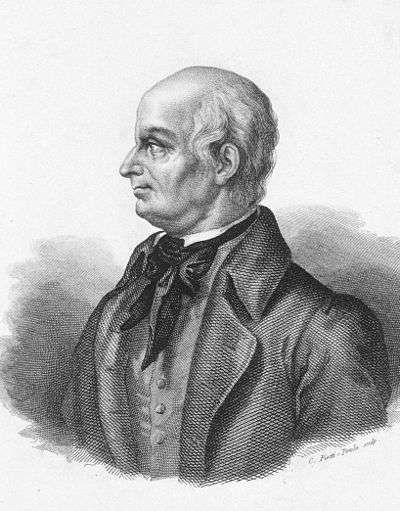
Lazzaro Spallanzani was the first to perform in vitro fertilization, with frogs, and an artificial insemination, using a dog and made various substantial contributions to the experimental study of bodily functions, animal reproduction, and animal echolocation.
-

Amedeo Avogadro, made important works to molecular theory and invented Avogadro's law and Avogadro constant
-

Enrico Fermi, the inventor of the Chicago Pile-1 and one of the builders of the Atomic Bomb
-

Emilio Gino Segrè, one of the discoverers of technetium, astatine, antiproton and a key figure in the creation of the Nuclear Weapon
-

Antonio Meucci, inventor of the first telephone
-
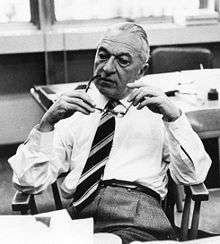
Bruno Rossi, pioneered X-ray astronomy and space plasma physics and highly contributed to particle physics and cosmic rays
-

Rita Levi-Montalcini, the oldest Nobel laureate ever to have lived, discovered the Nerve growth factor
-

Ettore Majorana, the discoverer of the Majorana fermions
Mathematics
During the Middle Ages Leonardo Fibonacci, the greatest Western mathematician of the Middle Ages, introduced the Hindu–Arabic numeral system to the Western World and he also introduced the sequence of Fibonacci numbers which he used as an example in Liber Abaci. Gerolamo Cardano, introduced the probability and established the binomial coefficients and binomial theorem and he also invented some essential onjects. During the renaissance, Luca Pacioli established accounting to the world, published the first work on Double-entry bookkeeping system. Galileo Galilei made several significant advances in mathematics. Bonaventura Cavalieri's works anticipated integral calculus and popularized logarithms in Italy. Jacopo Riccati, who was also a jurist, invented the Riccati equation. Maria Gaetana Agnesi, the first woman to write a mathematics handbook, become the first woman Mathematics Professor at a University. Gian Francesco Malfatti, posed the problem of carving three circular columns out of a triangular block of marble, using as much of the marble as possible, and conjectured that three mutually-tangent circles inscribed within the triangle would provide the optimal solution, which are now known as Malfatti circles. Joseph-Louis Lagrange, who was one of the most influential mathematician of his time, made essential works to analysis, number theory, and both classical and celestial mechanics. Gregorio Ricci-Curbastro invented the Tensor calculus and made meaningful works on algebra, infinitesimal analysis, and papers on the theory of real numbers.[52] Giuseppe Peano, founded the mathematical logic, the set theory, and alongside John Venn drew the first Venn diagram. Gregorio Ricci-Curbastro is well known for his invention on absolute differential calculus (tensor calculus), further developed by Tullio Levi-Civita, and its applications to the theory of relativity. Beniamino Segre is one of the main contributor of algebraic geometry and one of the founders of finite geometry. Paolo Ruffini is credited for his innovative work in mathematics, creating "Ruffini's rule" and co-creating the Abel–Ruffini theorem. Ennio de Giorgi, a Wolf Prize in Mathematics recipient in 1990, solved Bernstein's problem about minimal surfaces and the 19th Hilbert problem on the regularity of solutions of Elliptic partial differential equations.
Architecture
As Italy is home to the greatest number of UNESCO World Heritage Sites (51) to date and it is home to half the world's great art treasures,[53] Italians are known for their significant architectural achievements,[54] such as the construction of arches, domes and similar structures during ancient Rome, the founding of the Renaissance architectural movement in the late-14th to 16th centuries, and being the homeland of Palladianism, a style of construction which inspired movements such as that of Neoclassical architecture, and influenced the designs which noblemen built their country houses all over the world, notably in the UK, Australia and the US during the late 17th to early 20th centuries. Several of the finest works in Western architecture, such as the Colosseum, the Milan Cathedral and Florence cathedral, the Leaning Tower of Pisa and the building designs of Venice are found in Italy.
Italian architecture has also widely influenced the architecture of the world. British architect Inigo Jones, inspired by the designs of Italian buildings and cities, brought back the ideas of Italian Renaissance architecture to 17th-century England, being inspired by Andrea Palladio.[55] Additionally, Italianate architecture, popular abroad since the 19th century, was used to describe foreign architecture which was built in an Italian style, especially modelled on Renaissance architecture.
Music

From folk music to classical, music has always played an important role in Italian culture. Instruments associated with classical music, including the piano and violin, were invented in Italy, and many of the prevailing classical music forms, such as the symphony, concerto, and sonata, can trace their roots back to innovations of 16th- and 17th-century Italian music. Italians invented many of the musical instruments, including the piano and violin.
Most notable Italians composers include the Giovanni Pierluigi da Palestrina, Claudio Monteverdi, the Baroque composers Scarlatti, Corelli and Vivaldi, the Classical composers Paganini and Rossini, and the Romantic composers Verdi and Puccini, whose operas, including La bohème, Tosca, Madama Butterfly, and Turandot, are among the most frequently worldwide performed in the standard repertoire.[56][57] Modern Italian composers such as Berio and Nono proved significant in the development of experimental and electronic music. While the classical music tradition still holds strong in Italy, as evidenced by the fame of its innumerable opera houses, such as La Scala of Milan and San Carlo of Naples, and performers such as the pianist Maurizio Pollini and the late tenor Luciano Pavarotti, Italians have been no less appreciative of their thriving contemporary music scene.
Italians are amply known as the mothers of opera.[58] Italian opera was believed to have been founded in the early 17th century, in Italian cities such as Mantua and Venice.[58] Later, works and pieces composed by native Italian composers of the 19th and early 20th centuries, such as Rossini, Bellini, Donizetti, Verdi and Puccini, are among the most famous operas ever written and today are performed in opera houses across the world. La Scala operahouse in Milan is also renowned as one of the best in the world. Famous Italian opera singers include Enrico Caruso and Alessandro Bonci.
Introduced in the early 1920s, jazz took a particularly strong foothold on Italians, and remained popular despite the xenophobic cultural policies of the Fascist regime. Today, the most notable centres of jazz music in Italy include Milan, Rome, and Sicily. Later, Italy was at the forefront of the progressive rock movement of the 1970s, with bands like PFM and Goblin. Italy was also an important country in the development of disco and electronic music, with Italo disco, known for its futuristic sound and prominent usage of synthesizers and drum machines, being one of the earliest electronic dance genres, as well as European forms of disco aside from Euro disco (which later went on to influence several genres such as Eurodance and Nu-disco).
Producers and songwriters such as Giorgio Moroder, who won three Academy Awards for his music, were highly influential in the development of EDM (electronic dance music). Today, Italian pop music is represented annually with the Sanremo Music Festival, which served as inspiration for the Eurovision song contest, and the Festival of Two Worlds in Spoleto. Singers such as pop diva Mina, classical crossover artist Andrea Bocelli, Grammy winner Laura Pausini, and European chart-topper Eros Ramazzotti have attained international acclaim.
Cinema
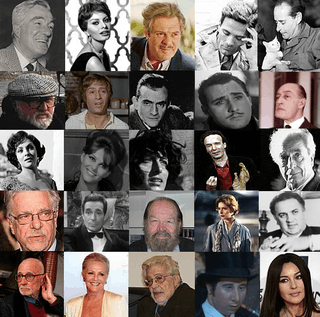
Since the development of the Italian film industry in the early 1900s, Italian filmmakers and performers have, at times, experienced both domestic and international success, and have influenced film movements throughout the world.
Following the Fascist era, characterized by the Telefoni Bianchi genre, they got international critical acclaim through the Neorealist genre, and starting from the 1960s through the Commedia all'italiana genre as well as through a number of auteurs such as Federico Fellini, Luchino Visconti, Michelangelo Antonioni and Pier Paolo Pasolini.[59]
Since the early 1960s they also popularized a large number of genres and subgenres, such as Peplum, Macaroni Combat, Giallo, Spaghetti Western, Musicarello, Poliziotteschi and Commedia sexy all'italiana.[59]
So far, Italy has won 14 Academy Awards for Best Foreign Language Film, the most of any country, and 12 Palme d'Or, the second-most of any country.
Sport
.jpg)
.jpg)
Italians have a long tradition in sport. In numerous sports, both individual and team, Italy has been very successful.
Association football is the most popular sport in Italy. Italy is one of the most successful national teams in association football having four FIFA World Cups, one UEFA European Championship and one Olympic tournament. Amongst the players who won the FIFA World Cup there are Giuseppe Meazza, Silvio Piola (to date the highest goalscorer in Italian first league history), Dino Zoff, Paolo Rossi, Marco Tardelli, Bruno Conti, Gianluigi Buffon, Fabio Cannavaro, Alessandro Del Piero, Andrea Pirlo and Francesco Totti. Amongst those who did not win the World Cup but laureated as European champions are Gianni Rivera, Luigi Riva (to date Italy's leading scorer of all time), Sandro Salvadore, Giacomo Bulgarelli, Pietro Anastasi and Giacinto Facchetti. Other prominent players who achieved success at club level are Giampiero Boniperti, Romeo Benetti, Roberto Boninsegna, Roberto Bettega, Roberto Baggio and Paolo Maldini. Of the abovementioned, the goalkeeper Dino Zoff, who served in the National team from 1968 to 1983, is to date the only Italian player to have won both the European championship (in 1968) and the FIFA World Cup (in 1982), apart from being the oldest winner ever of the World Cup. At club level, to date Italy has won a total of 12 European Cup / Champions' Leagues, 9 UEFA Cups / UEFA Europa League and 7 UEFA Cup Winners' Cup.
Motorcycle racers such as Giacomo Agostini and Valentino Rossi are recognized as some of the greatest sportstars of all time. Federica Pellegrini, one of the few female swimmers to have set world records in more than one event has been one of the world's most successful swimmers. Italian athletes have won 549 medals at the Summer Olympic Games, and another 114 medals at the Winter Olympic Games. Jessica Rossi scored a Shooting sport world record of 75 in the qualification and a world record of 99. As for Olympic games, 663 Italians won medals, particularly in Swordsmanship, which makes them the 6th most successful ethnic group in Olympic history. There more than 2,000,000 Italian skiers in the world, most of them in the north and in the centre. Italian skiers received good results in the Winter Olympic Games, World Cup, and World Championships.
Italians have won the World Cycling Championship more than any other country, except Belgium. The Giro d'Italia is a world-famous long-distance cycling race held every May, and constitutes one of the three Grand Tours, along with the Tour de France and the Vuelta a España, each of which last approximately three weeks. Tennis has a significant following near courts and on television. Italian professional tennis players are almost always in the top 100 world ranking of male and female players. Beach tennis with paddle racquet was invented by Italians, and is practised by many people across the country. Volleyball is played by a lot of amateur players and professional players compete in the Italian Volleyball League, regarded as the best and most difficult volleyball league in the world. The male and female national teams are often in the top 4 ranking of teams in the world. Athletics is a popular sport for Italians, as the Italian World and Olympic champions are very celebrated people. In wrestling, one of the most remarkable wrestlers is Bruno Sammartino, who held the record of the WWWF (World) Heavyweight Championship for over 11 years across two reigns, the first of which is the longest single reign in the promotion's history.
Rugby union was imported from France in the 1910s and has been regularly played since the 1920s; the National team has progressed slowly but significantly during the decades and thanks to the good results achieved in the second half of the 1990s, when they managed to beat historical teams like Scotland, Ireland and eventually France, Italy gained the admission to the Five Nation Championship, later renamed Six Nations; Italy has taken part to the Rugby World Cup since its inauguration in 1987 and never missed an edition though to date has never gone past the group stage.
Ethnogenesis
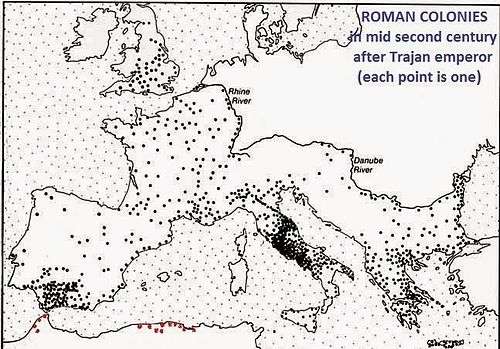
Due to historic demographic shifts in the Italian peninsula throughout history, modern Italians have mixed origins. This includes pre-Indo-European (such as the Etruscans and the Ligures)[60] and pre-Roman peoples (such as the Celts), as well as Italic people (such as the Latino-Faliscans, the Osco-Umbrians, the Sicels, and the Veneti). Most Italians originate from these two primary elements, and all share a common Latin heritage and history.
Prehistory
The Italians are a Southwestern European population, with origins predominantly from Southern and Western Europe.
The earliest modern humans inhabiting Italy are believed to have been Paleolithic peoples that may have arrived in the Italian Peninsula as early as 35,000 to 40,000 years ago. Italy is believed to have been a major Ice-age refuge from which Paleolithic humans later colonized Europe. Migrations from what is now Italy during the Paleolithic and Mesolithic link modern Italians to the populations of much of Western Europe and particularly the British Isles and Atlantic Europe.
The Neolithic colonization of Europe from Western Asia and the Middle East beginning around 10,000 years ago reached Italy, as most of the rest of the continent although, according to the demic diffusion model, its impact was most in the southern and eastern regions of the European continent.[61]
Indo-European
Starting in the 4th millennium BC as well as in the Bronze Age, the first wave of migrations into Italy of speakers of Indo-European languages occurred, with the appearance of the Remedello, the Rinaldone and the Gaudo cultures. These were later (from the 18th century BC) followed by others that can be identified as Italo-Celts, with the appearance of the Proto-Celtic Canegrate culture[62] and Proto-Italic Terramare culture,[63] both deriving from the Proto-Italo-Celtic Tumulus and Unetice cultures. Later Celtic La Tène and Halstatt cultures have been documented in Italy as far south as Umbria[64][65] and Latium,[66] inhabited by the Rutuli and the Umbri, closely related to the Ligures.[67] Italics occupied Southern and Central Italy: the "West Italic" group (including the Latins) were the first wave. They had cremation burials and possessed advanced metallurgical techniques. Major tribes included: Latins and Falisci in Lazio, Oenotrians and Italii in Calabria, Ausones, Aurunci and Opici in Campania and perhaps Sicels in Sicily. The were followed, and largely displaced by East Italic (Osco-Umbrians) group.[68]
Pre-Roman
By the beginning of the Iron Age the Etruscans emerged as the dominant civilization on the Italian peninsula. The Etruscans, whose primary home was in Etruria (modern Tuscany), inhabited a large part of central and northern Italy extending as far north as the Po Valley and as far south as Capua.[69] Traditionally the Etruscans were said to have migrated to Italy from Anatolia, but modern archaeological and genetic research suggests descent from the indigenous Villanovan culture of Italy.[70][71][72]
The Ligures are said to have been one of the oldest populations in Italy and Western Europe,[73] possibly of pre-Indo-European origin.[74] According to Strabo they were not Celts, but later became influenced by the Celtic culture of their neighbours, and thus are sometimes referred to as Celticized Ligurians or Celto-Ligurians.[75] Their language had affinities with both Italic (Latin and the Osco-Umbrian languages) and Celtic (Gaulish). They primarily inhabited the regions of Liguria, Piedmont, northern Tuscany, western Lombardy, western Emilia-Romagna and northern Sardinia, but are believed to have once occupied an even larger portion of ancient Italy as far south as Sicily.[76][77] They were also settled in Corsica and in the Provence region along the southern coast of modern France.
During the Iron Age, prior to Roman rule, the peoples living in the area of modern Italy were:
- Etruscans (Camunni, Lepontii, Raeti)
- Ligures (Apuani, Bagienni, Briniates, Corsi, Friniates, Garuli, Hercates, Ilvates, Insubres, Orobii, Laevi, Lapicini, Marici, Statielli, Taurini)
- Italics (Latins, Falisci, Marsi, Umbri, Volsci, Marrucini, Osci, Aurunci, Ausones, Campanians, Paeligni, Sabines, Bruttii, Frentani, Lucani, Samnites, Pentri, Caraceni, Caudini, Hirpini, Aequi, Fidenates, Hernici, Picentes, Vestini, Morgeti, Sicels, Veneti)
- Gauls (Ausones, Boii, Carni, Cenomani, Graioceli, Lingones, Segusini, Senones, Salassi, Vertamocorii)
- Greeks of Magna Graecia
- Sardinians (Nuragic tribes)
The bulk of Italy was inhabited by Italic tribes who occupied the modern regions of Lazio, Umbria, Marche, Abruzzo, Molise, Campania, Basilicata, Calabria, Apulia and Sicily. Sicily, in addition to having an Italic population in the Sicels, also was inhabited by the Sicani and the Elymians, of uncertain origin. The Veneti, most often regarded as an Italic tribe,[78] chiefly inhabited the Veneto, but extended as far east as Friuli-Venezia Giulia and Istria, and had colonies as far south as Lazio.[79][80]
Beginning in the 8th century BC Greeks arrived in Italy and founded cities along the coast of southern Italy and eastern Sicily, which became known as Magna Graecia ("Greater Greece"). The Greeks were frequently at war with the native Italic tribes, but nonetheless managed to Hellenize and assimilate a good portion of the indigenous population located along eastern Sicily and the Southern coasts of the Italian mainland.[81][82] According to Beloch the number of Greek citizens in south Italy at its greatest extent reached only 80,000-90,000, while the local people subjected by the Greeks were between 400,000-600,000.[83][84] By the 4th and 3rd century BC Greek power in Italy was challenged and began to decline, and many Greeks were pushed out of peninsular Italy by the native Oscan, Brutti and Lucani tribes.[85]

The Gauls crossed the Alps and invaded northern Italy in the 4th and 3rd centuries BC, settling in the area that became known as Cisalpine Gaul ("Gaul on this side of the Alps"). Although named after the Gauls, the region was mostly inhabited by indigenous tribes, namely the Ligures, Etruscans, Veneti and Euganei. Estimates by Beloch and Brunt suggest that in the 3rd century BC the Gaulish settlers of north Italy numbered between 130,000-140,000 out of a total population of about 1.4 million.[84][86][86] According to Pliny and Livy after the invasion of the Gauls some of the Etruscans living in the Po Valley sought refuge in the Alps and became known as the Raeti.[87][88] The Raeti inhabited the region of Trentino-Alto Adige, as well as eastern Switzerland and Tyrol in western Austria. The Ladins of north-eastern Italy and the Romansh people of Switzerland are said to be descended from the Raeti.[89]
Roman
The Romans – who according to legend originally consisted of three ancient tribes: Latins, Sabines and Etruscans[90] – would go on to conquer the whole Italian peninsula. During the Roman period hundreds of cities and colonies were established throughout Italy, including Florence, Turin, Como, Pavia, Padua, Verona, Vicenza, Trieste and many others. Initially many of these cities were colonized by Latins, but later also included colonists belonging to the other Italic tribes who had become Latinized and joined to Rome. After the Roman conquest of Italy "the whole of Italy had become Latinized".[91]
After the Roman conquest of Cisalpine Gaul and the widespread confiscations of Gallic territory, much of the Gaulish population was killed or expelled.[92][93] Many colonies were established by the Romans in the former Gallic territory of Cisalpine Gaul, which was then settled by Roman and Italic people. These colonies included Bologna, Modena, Reggio Emilia, Parma, Piacenza, Cremona and Forlì. According to Strabo:
"The greater part of the country used to be occupied by the Boii, Ligures, Senones, and Gaesatae; but since the Boii have been driven out, and since both the Gaesatae and the Senones have been annihilated, only the Ligurian tribes and the Roman colonies are left."[93]
The Boii, the most powerful and numerous of the Gallic tribes, were expelled by the Romans after 191 BC and settled in Bohemia.[94]
Population movement and exchange among people from different regions was not uncommon during the Roman period. Latin colonies were founded at Ariminum in 268 and at Firmum in 264,[95] while large numbers of Picentes, who previously inhabited the region, were moved to Paestum and settled along the river Silarus in Campania. Between 180-179 BC 47,000 Ligures belonging to the Apuani tribe were removed from their home along the modern Ligurian-Tuscan border and deported to Samnium, an area corresponding to inland Campania, while Latin colonies were established in their place at Pisa, Lucca and Luni.[96] Such population movements contributed to the rapid Romanization and Latinization of Italy.[97]
Between the two millenniums

A large Germanic confederation of Scirii, Heruli and Rugians, led by Odoacer, invaded and settled Italy in 476.[98] They were preceded by 120,000 Alemanni, including 30,000 warriors with their families, who settled in the Po Valley in 371,[99] and by 100,000 Burgundians who settled between North Western Italy and Southern France in 443.[100] The Germanic tribe of the Ostrogoths led by Theoderic the Great conquered Italy and presented themselves as upholders of Latin culture, mixing Roman culture together with Gothic culture, in order to legitimize their rule amongst Roman subjects who had a long-held belief in the superiority of Roman culture over foreign "barbarian" Germanic culture.[101] The number of Goths under Theodoric has been variously estimated between 200,000 and 250,000.[102] Since Italy had a population of several million, the Goths did not constitute a significant addition to the local population.[103] At the height of their power, there were about 200,000 Ostrogoths in a population of 6 or 7 million.[100][104] Before them, Radagaisus led between 200,000 and 400,000 Goths in Italy in 406.[105] After the Gothic War, which devastated the local population, the Ostrogoths were defeated. But in the sixth century, another Germanic tribe known as the Longobards invaded Italy, which in the meantime had been reconquered by the East Roman or Byzantine Empire. The Longobards were a small minority compared to the roughly four million people in Italy at the time.[106] They were no more than 500,000 settlers – 10-15% of the total population.[106][107] They were later followed by the Bavarians and the Franks, who conquered and ruled most of Italy. Numerous groups of Slavs and Bulgars, pushed by the Khazars, settled in the Italian peninsula between the 7th and the 8th centuries.[108][109][110]
Following Roman rule, Sicily and Sardinia were conquered by the Vandals, then by the Ostrogoths, and finally by the Byzantines. At one point, while Sardinia grew increasingly autonomous from Byzantine rule to the point of organizing itself into four sovereign Kingdoms or "Judgeships" (Judicati) that would last until the Aragonese conquest in the XV° century, Sicily was invaded and ruled by Arab peoples (831–1072), later to be followed by the Normans; at that time, the Lombards of Sicily (not to be confused with the Longobards), coming from the Northern Italy, settled in the central and eastern part of Sicily. After the marriage between the Norman Roger I of Sicily with Adelaide del Vasto, descendant of Aleramici family, many Northern Italian colonisers (known collectively as Lombards) left their homeland, in the Aleramici's possessions in Piedmont and Liguria (then known as Lombardy), to settle on the island of Sicily.[111][111][112]
Before them, other Lombards arrived in Sicily, with an expedition departed in 1038, led by the Byzantine commander George Maniakes,[113] which for a very short time managed to snatch Messina and Syracuse from the Arabs. The Lombards who arrived with the Byzantines settled in Maniace, Randazzo and Troina, while a group of Genoese and other Lombards from Liguria settled in Caltagirone.[114]

During the subsequent Swabian rule under the Holy Roman Emperor Frederick II, who spent most of his life as king of Sicily in his court in Palermo, the Islamic element was progressively eradicated until the massive deportation of the last Muslims of Sicily.[115] As a result of Arab expulsion, many towns across Sicily were left depopulated. By the 12th century, Swabian kings granted immigrants from northern Italy (particularly Piedmont, Lombardy and Liguria), Latium and Tuscany in central Italy, and French regions of Normandy, Provence and Brittany (all collectively known as Lombards.)[116][117] settlement into Sicily, re-establishing the Latin element into the island, a legacy which can be seen in the many Gallo-Italic dialects and towns found in the interior and western parts of Sicily, brought by these settlers.[118] It is believed that the Lombard immigrants in Sicily over a couple of centuries were a total of about 200,000, a quite relevant figure.[119]
An estimated 20.000 Swabians and 40.000 Normans settled in the southern half of Italy during this period.[120] Additional Tuscan migrants settled in Sicily after the Florentine conquest of Pisa in 1406.[121]
Some of the expelled Muslims were deported to Lucera (Lugêrah, as it was known in Arabic). Their numbers eventually reached between 15,000 and 20,000,[122] leading Lucera to be called Lucaera Saracenorum because it represented the last stronghold of Islamic presence in Italy. The colony thrived for 75 years until it was sacked in 1300 by Christian forces under the command of the Angevin Charles II of Naples. The city's Muslim inhabitants were exiled or sold into slavery,[123] with many finding asylum in Albania across the Adriatic Sea.[124] After the expulsions of Muslims in Lucera, Charles II replaced Lucera's Saracens with Christians, chiefly Burgundian and Provençal soldiers and farmers,[125] following an initial settlement of 140 Provençal families in 1273.[126] A remnant of the descendants of these Provençal colonists, still speaking a Franco-Provençal dialect, has survived till the present day in the villages of Faeto and Celle di San Vito.
Modern period
.jpg)
_-_Giuseppe_Mazzini.jpg)
Substantial migrations of Lombards to Naples, Rome and Palermo, continued in the sixteenth and seventeenth centuries, driven by the constant overcrowding in the north.[127][128] Beside that, minor but significant settlements of Slavs (the so-called Schiavoni) and Arbereshe in Italy have been recorded.
The geographical and cultural proximity with Southern Italy pushed Albanians to cross the strait of Otranto, especially after Skanderbeg's death and the conquest of the Balkans by the Ottomans. In defense of the Christian religion and in search of soldiers loyal to the Spanish crown, Alfonso I of Aragon, also king of Naples, invited Arbereshe soldiers to move to Italy with their families. In return the king guaranteed to Albanians lots of land and a favourable taxation.
Arbereshe and Schiavoni were used to repopulate abandoned villages or villages whose population had died in earthquakes, plagues and caresties. Albanian soldiers were also used to quell rebellions in Calabria.
Major Slavic colonies were in Friuli,[129] Veneto, Marche, Sicily[130] and throughout the Kingdom of Naples (including Apulia, Molise, Abruzzo, Calabria, Terra di Lavoro and Campania).[131]
According to a consolidated tradition of historical studies, there are eight waves of immigration of Albanians in Italy, to which must be added: the movements within the territory of southern Italy and the latest migration (the ninth) in recent years.[132] A remnant of the descendants of these Albanian colonists, still speaking an Albanian language, has survived till the present day in many areas of Italy. Their numbers are between 80,000[133] and 260,000 people.[134][135]
In this period, large groups of ethnic Bavarians and Swabians settled in the northern half of the country. Most of them were quickly assimilated in the native population. Nevertheless, in 1882, 100.000 German speakers were still living in the Po valley.[136]
Italian diaspora

Strictly defined, the Italian diaspora took place between the unification of the country in 1861 and the outbreak of the First World War in 1914. However, large-scale migrations phenomena did not recede until the late 1920s, well into the Fascist regime, and one last wave can be observed after the end of the Second World War.
Over 80 million people of full or partial Italian descent live outside of Europe, with nearly 40 million living in Latin America (primarily Brazil, Argentina, Venezuela, Peru and Uruguay), about 19 million living in North America (United States and Canada) and a million in Australia. Others live in other parts of Europe (primarily France, Germany, and Switzerland). Most Italian citizens living abroad live in other nations of the European Union.
Autochthonous Italian communities outside Italy
In both the Slovenian and Croatian portions of Istria, in Dalmatia as well as in the city of Rijeka, Italian refers to autochthonous speakers of Italian and various Italo-Dalmatian languages, natives in the region since before the inception of the Venetian Republic. In the aftermath of the Istrian exodus following the Second World War, most Italian-speakers are today located in the south and west of Istria, and number about 30,000.[137] The number of inhabitants with Italian ancestry is likely much greater but undeterminable. In the first Austrian census carried out in 1870 the number of Italians Dalmatians varied between 40,000 and 50,000 amongst the about 250,000 inhabitants of Dalmatia, or 20% of the total Dalmatian population.[138]
In the French County of Nice, autochthonous speakers of regional languages of Italy (Ligurian and Piedmontese), are natives in the region since before annexation to France in 1860. The number of inhabitants with Italian ancestry is generally indeterminable, and the use of French language is now ubiquitous. In addition, Corsica was a part of the Republic of Genoa until 1768 and most of the islanders still have a certain level of proficiency of Corsican, a language of the Italo-Dalmatian family closely related to Tuscan. The Italian language ceased to have official status in Corsica in 1859[139] when it was supplanted by French and a process of de-Italianization was started by the French government in Corsica (and in 1861 the Nizzardo area).
A similar process happened in Malta, where the Maltese Italians have practically disappeared in the last two centuries after Britain took control of the island during Napoleon times.
Swiss Italian is spoken as natively by about 350,000 people in the canton of Ticino and in the southern part of Graubünden (Canton Grigioni). Swiss-Italian also refers to the Italian speaking population in this region (southern Switzerland) close to the border with Italy. Swiss Italian dialects are spoken in emigrant communities around the world, including in Australia.
See also
Notes
- 1 2 3 4 5 6 7 "Italiani nel Mondo: diaspora italiana in cifre" [Italians in the World: Italian diaspora in figures] (PDF) (in Italian). Migranti Torino. 30 April 2004. Archived from the original (PDF) on 27 February 2008. Retrieved 22 September 2012.
- ↑ "Total ancestry categories tallied for people with one or more ancestry categories reported 2010 American Community Survey 1-Year Estimates". United States Census Bureau. Retrieved 30 November 2012.
- ↑ http://www.correodelorinoco.gob.ve/tema-dia/embajador-italia-caracas-asegura-que-sistema-electoral-venezolano-es-confiable/ "...el diplomático calcula que 5% o 6% de la población venezolana actual tiene origen italiano."
- ↑ Statistics Canada. "2011 National Household Survey: Data tables". Retrieved 23 January 2016.
- ↑ www.espejodelperu.com.pe. "Inmigración italiana al Perú". Retrieved 4 April 2016.
- ↑ "ABS Ancestry". 2012.
- ↑ "Grafiken zur Migration in Deutschland: Wer kommt, wer geht – der Faktencheck". SPIEGEL ONLINE.
- ↑ "Bevölkerung, Strukturerhebung der eidgenössischen Volkszählung 2011: Bevölkerung nach Sprache und Religion, Ständige Wohnbevölkerung ab 15 Jahren nach zuhause gesprochenen Sprachen, 2011" (XLS) (Statistics) (in German, French, and Italian). Neuchâtel: Swiss Federal Statistical Office, 2013. 30 May 2013. Retrieved 22 December 2013.
- ↑ "Vreemde afkomst 01/01/2012". Retrieved 29 March 2015.
- ↑ http://www.ons.gov.uk/ons/rel/migration1/migration-statistics-quarterly-report/february-2012/population-by-country-of-birth-and-nationality.xls
- ↑ "Episodio 10: Italianos". Canal Once. Retrieved 6 July 2015.
- ↑ "Bevölkerung nach Staatsangehörigkeit und Geburtsland". Statistik Austria (in German).
- ↑ "Italians looking for work in Albania – 19,000, says minister". ANSAmed. 15 May 2014. Retrieved 14 June 2014.
- ↑ Demographics of Croatia
- ↑ "Number of foreigners". Czech Statistical Office. Retrieved 2015-07-22.
- ↑ "(Excel) Populaţia stabilă după etnie şi religie – categorii de localităţi"; retrieved November 24, 2013
- ↑ http://riforma.it/it/articolo/2016/02/01/litalia-e-le-religioni-nel-2016
- ↑ Miti e simboli della rivoluzione nazionale. Treccani.it
- ↑ Ethnic and Cultural Diversity by Country, James D. Fearon. Department of Political Science, Stanford University
- ↑ Italy/Italians: Development of a Nation, how Italy became Italy, and how the Italians became Italians. worldology.com
- ↑ "Criteria underlying legislation concerning citizenship". Italian Ministry of Interior. Retrieved 22 September 2012.
- ↑ Ruggiero Romano, Corrado Vivanti, (1972). 'I caratteri originali'. In: Giulio Einaudi Editore (ed), Storia d'Italia Einaudi. 1st ed. Torino: Einaudi. pp.958–959.
- ↑ "ISTAT". Retrieved 29 March 2015.
- ↑ Cohen, Robin (1995). The Cambridge survey of world migration. Cambridge: Cambridge University Press. pp. 142–144. ISBN 0-521-44405-5.
- ↑ http://infoaire.interno.it/stat_note.htm
- ↑ http://www.progettoculturale.it/cci_new/documenti_cei/2011-03/08-23/4%20-%20Rapp%20Italiani.pdf
- ↑ Macesich, George (2000). Issues in Money and Banking. United States: Greenwood Publishing Group. p. 42. ISBN 0-275-96777-8.
- ↑ Michael Barone (2 September 2010). "The essence of Italian culture and the challenge of the global age". Council for Research in Values and philosophy. Retrieved 22 September 2012.
- ↑ Keating, Michael (2004). Regions and regionalism in Europe. Cheltenham: Edward Elgar Publishing. p. 378. ISBN 1-84376-127-0.
- ↑ "Italian family and culture". Syracuse University in Florence. Retrieved 22 September 2012.
- ↑ OLD, p. 974: "first syll. naturally short (cf. Quint.Inst.1.5.18), and so scanned in Lucil.825, but in dactylic verse lengthened metri gratia."
- ↑ J.P. Mallory and D.Q. Adams, Encyclopedia of Indo-European Culture (London: Fitzroy and Dearborn, 1997), 24.
- ↑ Dionysius of Halicarnassus, Roman Antiquities, 1.35, on LacusCurtius
- ↑ Aristotle, Politics, 7.1329b, on Perseus
- ↑ Thucydides, The Peloponnesian War, 6.2.4, on Perseus
- ↑ http://lagrandebiblioteca.com/moda-e-stile/italiani.php
- ↑ McKitterick, Rosamond (1995). The New Cambridge Medieval History: Volume II. Cambridge: Cambridge University Press. p. 105. ISBN 0-521-36292-X.
- ↑ Peter Burke (1998). The European Renaissance: Centers and Peripheries. Wiley. ISBN 978-0-631-19845-1.
- ↑ Spielvogel, Jackson J. (2010). Western Civilization: A Brief History, Volume I. Boston: Cengage Learning. p. 186. ISBN 0-495-57148-2.
- ↑ Laura, Lynn Windsor (2002). Women in Medicine: An Encyclopedia. Santa Barbara: ABC-CLIO. p. 202. ISBN 1-57607-392-0.
- ↑ Mariani, John F. (2011). How Italian Food Conquered the World. New York: Palgrave Macmillan. p. 15. ISBN 978-0-230-10439-6.
- 1 2 3 4 http://history-world.org/enlightenment_throughout_europe.htm
- ↑ http://maritain.nd.edu/jmc/etext/hop70.htm
- ↑ Hostettler, John (2011). Cesare Beccaria: The Genius of 'On Crimes and Punishments'. Hampshire: Waterside Press. p. 160. ISBN 978-1904380634.
- ↑ Nunzio Pernicone, Italian Anarchism 1864–1892, pp. 111-113, AK Press 2009.
- ↑ The Least Known Masterpiece of European Literature, New Republic
- ↑ The Zibaldone project, University of Birmingham
- ↑ Code of Canon Law, Can. 252, § 3
- ↑ Lucia Orlando, "Physics in the 1930s: Jewish Physicists' Contribution to the Realization of the" New Tasks" of Physics in Italy." Historical studies in the physical and biological sciences (1998): 141-181. in JSTOR
- ↑ Carroll, Rory (17 June 2002). "Bell did not invent telephone, US rules". The Guardian. London, UK.
- ↑ Several Italian encyclopaedias claim Meucci as the inventor of the telephone, including: – the "Treccani" – the Italian version of Microsoft digital encyclopaedia, Encarta. – Enciclopedia Italiana di Scienze, Lettere ed Arti (Italian Encyclopedia of Science, Literature and Arts).
- ↑ Ricci-Curbastro, Gregorio (1918), Lezioni di Analisi algebrica ed infinitesimale (1926 ed.), Padova: Tip. Universitaria
- ↑ Abbot, Charles (2006). Italy: A quick guide to customs & etiquette. Milan: Morellini Editore. p. 101. ISBN 88-89550-13-9.
- ↑ Architecture in Italy, ItalyTravel.com
- ↑ "History – Historic Figures: Inigo Jones (1573–1652)". BBC. 1 January 1970. Retrieved 12 March 2013.
- ↑ "Quick Opera Facts 2007". OPERA America. 2007. Archived from the original on 1 October 2006. Retrieved 23 April 2007.
- ↑ Alain P. Dornic (1995). "An Operatic Survey". Opera Glass. Retrieved 23 April 2007.
- 1 2 Kimbell, David R. B (29 April 1994). Italian Opera. Google Books. ISBN 978-0-521-46643-1. Retrieved 20 December 2009.
- 1 2 Lino Aulenti. Storia del cinema italiano. libreriauniversitaria, 2011. ISBN 886292108X.
- ↑ Pina Polo, Francisco (2009). "Deportation of Indigenous Population as a Strategy for Roman Dominion in Hispania". In Morillo, Ángel; Hanel, Norbert; Martín, Esperanza. Limes XX - 20th International Congress of Roman Frontier Studies, Leon 2006. Anejos de Gladius ; 13.1. 1. Madrid: Ediciones Polifemo. pp. 281–8. ISBN 9788400088545.
- ↑ Dupanloup I, Bertorelle G, Chikhi L, Barbujani G (July 2004). "Estimating the impact of prehistoric admixture on the genome of Europeans". Molecular Biology and Evolution. 21 (7): 1361–72. doi:10.1093/molbev/msh135. PMID 15044595.
- ↑ Venceslas Kruta: La grande storia dei celti. La nascita, l'affermazione e la decadenza, Newton & Compton, 2003, ISBN 88-8289-851-2, ISBN 978-88-8289-851-9
- ↑ Marzatico, Franco (19 August 2004). Francesco Menotti, ed. Living on the Lake in Prehistoric Europe: 150 Years of Lake-Dwelling Research. Routledge. pp. 83–84. ISBN 978-1-134-37181-5.
- ↑ Prichard, James Cowles (1826). Researches Into the Physical History of Mankind: In Two Volumes. John and Arthur Arch, Cornhill. p. 60. Retrieved 3 July 2016.
- ↑ McNair, Raymond F. (22 March 2012). Key to Northwest European Origins. Author House. p. 81. ISBN 978-1-4685-4600-2.
- ↑ Hazlitt, William (1851). The Classical Gazetteer: A Dictionary of Ancient Geography, Sacred and Profane. Whittaker. p. 297. Retrieved 3 July 2016.
- ↑ Nicholas Hammond, Howard Scullard. Dizionario di antichità classiche. Milano, Edizioni San Paolo, 1995, p.1836-1836. ISBN 88-215-3024-8.
- ↑ Cornell, T. J. (1995): The Beginnings of Rome. p43
- ↑ Samuel Edward Finer, The History of Government from the Earliest Times, Oxford University Press, 1999, p. 398
- ↑ "Were the Etruscans after all native Italians?". For what they were... we are – Prehistory, Anthropology and Genetics. 8 February 2013. Retrieved 2015-04-25.
- ↑ Achilli A, Olivieri A, Pala M, et al. (April 2007). "Mitochondrial DNA variation of modern Tuscans supports the near eastern origin of Etruscans". Am. J. Hum. Genet. 80 (4): 759–68. doi:10.1086/512822. PMC 1852723
 . PMID 17357081.
. PMID 17357081. - ↑ Cavalli-Sforza, L. L., P. Menozzi, A. Piazza. 1994. The History and Geography of Human Genes. Princeton University Press, Princeton. ISBN 0-691-02905-9
- ↑ Léon Homo, Primitive Italy, Routledge, 1996, p. 45
- ↑ Karl Viktor Müllenhoff, Deutsche Alterthurnskunde, I volume.
- ↑ Strabo, Geography, book 2, chapter 5, section 28.
- ↑ Leonard Robert Palmer, The Latin Language, London: Faber and Faber, 1954, p. 54
- ↑ Sciarretta, Antonio (2010). Toponomastica d'Italia. Nomi di luoghi, storie di popoli antichi. Milano: Mursia. pp. 174–194. ISBN 978-88-425-4017-5.
- ↑ According, among others, to: Prosdocimi, Aldo Luigi (1993). Popoli e civiltà dell'Italia antica (in Italian). 6/1. Spazio Tre. Cf. Villar, Francisco (2008). Gli Indoeuropei e le origini dell'Europa (in Italian). Il Mulino. p. 490.
- ↑ Storia, vita, costumi, religiosità dei Veneti antichi at .www.venetoimage.com (in Italian). Accessed on 2009-08-18.
- ↑ (C. Plinii, Naturalis Historia, III, 68-69)
- ↑ The Saylor Foundation. "The Ancient People of Italy" (PDF). Saylor.org.
- ↑ Olivia E. Hayden. "Urban Planning in the Greek Colonies in Sicily and Magna Graecia". Tufts University, 2013.
- ↑ P. A. Brunt, Italian manpower, 225 B.C.-A.D. 14, Oxford University Press, 1971, p. 52
- 1 2 La popolazione del Mondo Greco-Romano, Karl Julius Beloch
- ↑ Dictionary of Greek and Roman Geography, Vol. 1, Boston: Little, Brown, and Company. 1854. p. 4
- 1 2 Luuk De Ligt, Peasants, Citizens and Soldiers: Studies in the Demographic History of Roman Italy 225 BC – AD 100. Cambridge; New York: Cambridge University Press, 2012. p. 43-44
- ↑ Pliny the Elder III.20
- ↑ Livy V.33
- ↑ Cambridge Anthropology, Vol. 6, 1980, p. 60
- ↑ A Dictionary of Greek and Roman Biography and Mythology, Vol. 3, London. John Murray: printed by Spottiswoode and Co., New-Street Square and Parliament Streetp. 661
- ↑ M. Rostovtzeff, A History of the Ancient World: Rome, Vol. II, Oxford: Clarendon Press, 1927, p. 171
- ↑ Alfred S. Bradford, With Arrow, Sword, and Spear: A History of Warfare in the Ancient World, Praeger Publishers, 2001, p. 191
- 1 2 Strabo, 5.1.10
- ↑ Strabo, 5.213.
- ↑ Staveley, ES (1989). "Rome and Italy in the Early Third Century". In Walbank, Frank William. The Cambridge Ancient History. Volume VII: the Hellenistic World: Part 2: The Rise of Rome to 220 BC. Cambridge: Cambridge University Press. p. 425.
Certainly, steps designed to consolidate her hold in the north-east followed this incident in quick succession: the foundation in 268 of the Latin colony of Ariminum .... the annexation of the whole Picentine land save for … Ancona and … Asculum; the transportation of large numbers of Picentes to the ager Picentinus on the west coast, and finally in 264 the planting of a second large Latin colony on the coast at Firmum.
- ↑ Ettore Pais, Ancient Italy: Historical and Geographical Investigations in Central Italy, Magna Graecia, Sicily, and Sardinia, The University of Chicago Press, 1908
- ↑ Patrick Bruun, Studies in the romanization of Etruria, Vol. 1-7, p. 101
- ↑ Jordanes, Getica 243
- ↑ Ammianus Marcellinus, Res Gestae 28,5,15
- 1 2 Paul, Vauthier Adams (3 August 2000). Experiencing World History. NYU Press.
- ↑ Ward-Perkins, Bryan (2006). The Fall of Rome: And the End of Civilization. Oxford: Oxford University Press. p. 31.
- ↑ S. Burns, Thomas (1984). A History of the Ostrogoths. Bloomington: Indiana University Press. p. 44.
- ↑ Frank N. Magill, The Middle Ages: Dictionary of World Biography, Volume 2, Salem Press, Inc. 1998, p. 895.
- ↑ William A. Sumruld, Augustine and the Arians: The Bishop of Hippo's Encounters with Ulfilan Arianism, Associated Press University Presses 1994, p. 23.
- ↑ Delbr_ck, Hans (1990). The barbarian invasions. U of Nebraska Press. p. 286.
- 1 2 Antonio Santosuosso, Barbarians, Marauders, and Infidels: The Ways of Medieval Warfare, Westview Press 2004, p. 44.
- ↑ Christie, Neil (1995). The Lombards: the Ancient Longobards. Blackwell. pp. 38–41.
- ↑ Diaconis, Paulus (787). Historia Langobardorum. Monte Cassino, Italy. Book V chapter 29.
- ↑ Corbanese, G. G. (1983). Il Friuli, Trieste e l’Istria: dalla Preistoria alla caduta del Patriarcato d’Aquileia (Grande Atlante Cronologico ed.). Udine: Del Bianco.
- ↑ G., Barbina (1981). Codroipo (Il ponte ed.).
- 1 2 "Following the marriage to his third wife, Adelaide, from the Aleramici clan in Piedmont, many northern Italians (the sources refer to them as lombardi, as opposed to the longobardi from southern Italy) settled on the island of Sicily from the late Eleventh century onwards." From G. A. Loud, Alex Metcalfe, The Society of Norman Italy, Brill, Leiden 2002, p. 323.
- ↑ These Lombard colonisers were natives from Northern Italy and should not be confused with the Lombard Germanic tribe, who were referred to as Longobardi to distinguish them from the locals of the region who were known as Lombardi.
- ↑ Jules Gay, L'Italie meridionale et l'empire Byzantin, Parigi 1904, vol. II, p. 450-453.
- ↑ David Abulafia, Le due Italie: relazioni economiche fra il regno normanno di Sicilia e i comuni settentrionali, Cambridge University Press 1977 (trad. it. Guida Editori, Napoli 1991), p. 114.
- ↑ Abulafia, David (2000). Mediterranean encounters, economic, religious, political, 1100–1550. Ashgate Publishing. p. 236. ISBN 0-86078-841-5.
- ↑ https://archive.org/stream/archiviostoricos24soci/archiviostoricos24soci_djvu.txt
- ↑ Francesco Barone (2003). "Islām in Sicilia nel XII e XIII secolo: ortoprassi, scienze religiose e tasawwuf". In Saverio Di Bella; Dario Tomasello. L'Islam in Europa tra passato e futuro. Cosenza: Pellegrini Editore. p. 104. ISBN 88-8101-159-X.
- ↑ "History and etymology of Aidone and Morgantina". Italy This Way. Retrieved 22 September 2012.
- ↑ According to the most credible hypothesis this settlement dates back to a period between the eleventh century and the thirteenth century. Cfr. Fiorenzo Toso (2008). Le minoranze linguistiche in Italia. Bologna: Il Mulino. p. 137. ISBN 978-88-15-12677-1.
- ↑ Musca, Giosuè (15–17 October 1985). Terra e uomini nel Mezzogiorno normanno-svevo: atti delle settime Giornate normanno-sveve. Bari: EDIZIONI DEDALO.
- ↑ B. Fanucci, Giovanni (1788). Orazione accademica sull'istoria militare Pisana. Prosperi. p. 100.
- ↑ "The Military Factor in Social Change Vol. 2". google.it.
- ↑ Julie Taylor. Muslims in Medieval Italy: The Colony at Lucera. Lanham, Md.: Lexington Books. 2003.
- ↑ Ataullah Bogdan Kopanski. Islamization of Shqeptaret: The clas of Religions in Medieval Albania.
- ↑ "Mercenaries in Medieval and Renaissance Europe". google.it.
- ↑ "Italian City States 1250–1453 by Sanderson Beck". beck.org.
- ↑ "L'EMIGRAZIONE ALLA ROVESCIA. DAL LAGO DI COMO ALLA SICILIA (PDF)" (PDF).
- ↑ "L'EMIGRAZIONE ALLA ROVESCIA: TRA VALCHIAVENNA E SICILIA (PDF)" (PDF).
- ↑ "Il popolamento slavo (PDF)" (PDF).
- ↑ "UN INSEDIAMENTO SLAVO PRESSO SIRACUSA NEL PRIMO MILLENNIO D.C. (PDF)" (PDF).
- ↑ "LE COLONIE SERBOCROATE DELL'ITALIA MERIDIONALE (PDF)" (PDF).
- ↑ "LE MIGRAZIONI DEGLI ARBERESHE".
- ↑ Handbook of ethnotherapies, Christine E. Gottschalk-Batschkus, Joy C. Green, BoD – Books on Demand, 2002, ISBN 3-8311-4184-3, p. 110.
- ↑ Ethnobotany in the New Europe: People, Health and Wild Plant Resources, vol. 14, Manuel Pardo de Santayana, Andrea Pieroni, Rajindra K. Puri, Berghahn Books, 2010, ISBN 1-84545-814-1, p. 18.
- ↑ Albanian, Arbëreshë – A language of Italy – Ethnic population: 260,000 (Stephens 1976).
- ↑ Ciola, Gualtiero (1997). Noi, Celti e Longobardi: le altre radici degli Italiani : l'Italia celtica preromana, l'Italia germanizzata dei secoli bui. Helvetia. p. 238.
- ↑ "Languages of Croatia". Ethnologue. Retrieved 22 September 2012.
- ↑ Monzali, Luciano (2009). The Italians of Dalmatia: From Italian Unification to World War I. Toronto: University of Toronto Press. p. 187. ISBN 978-0-8020-9931-0.
- ↑ Abalain, Hervé, (2007) Le français et les langues historiques de la France, Éditions Jean-Paul Gisserot, pp.113
Bibliography
- Baretti, Joseph (1768). An account of the manners and customs of Italy. London: T. Davies.
- Lyman, Theodore (1820). The political state of Italy. Boston: Wells and Lilly.
- Leopardi, Giacomo (1824). Discorso sopra lo stato presente dei costumi degl'italiani (in Italian). Venice: Marsilio Editore.
- Micali, Giuseppe (1832). Storia degli antichi popoli italiani (in Italian). Florence: Tipografia Dante.
- Prezzolini, Giuseppe (1921). Codice della vita italiana (in Italian). Florence: La Voce.
- Devoto, Giacomo (1951). Gli antichi italici (in Italian). Florence: Vallecchi.
- Montanelli, Indro (1965). Storia d'Italia (in Italian). Milan: Corriere della Sera.
- Bollati, Giulio (1996). L'italiano: il carattere nazionale come storia e come invenzione (in Italian). Turin: Einaudi. ISBN 9788806142643.

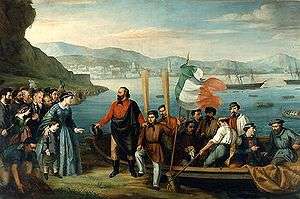

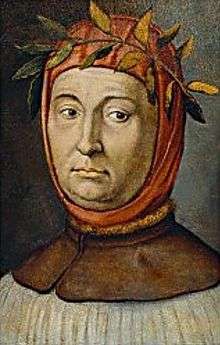


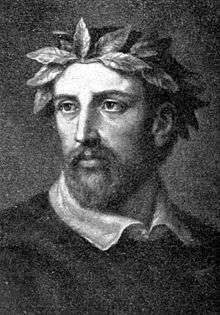

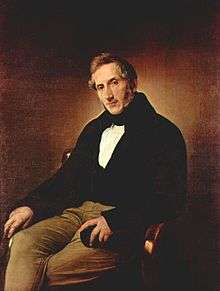
_-_ritr._A_Ferrazzi%2C_Recanati%2C_casa_Leopardi.jpg)



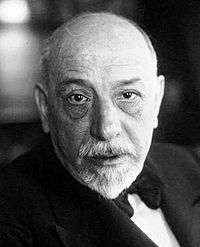


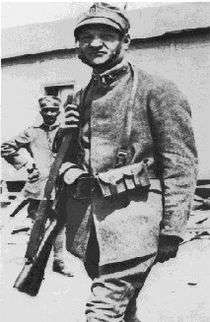

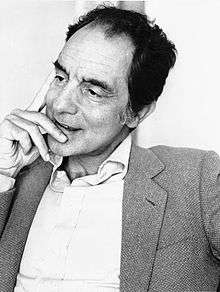




.png)


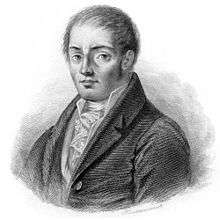
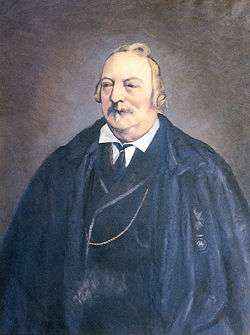

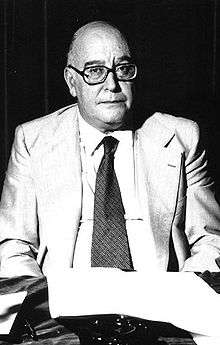
_-_Flickr_image_3943365916_by_Margaret_Zimmerman.jpg)

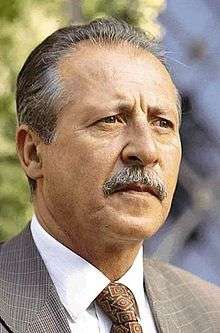
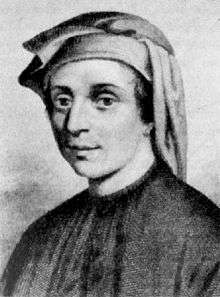

.jpeg)
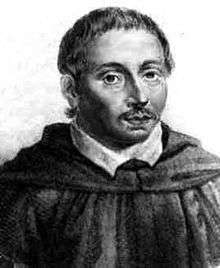
.jpg)





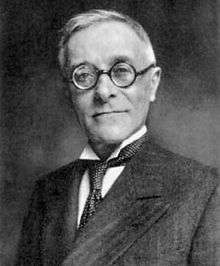
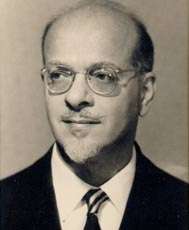


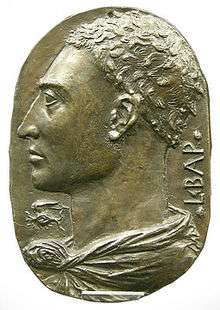

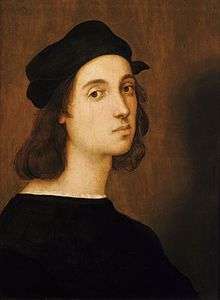





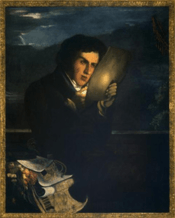


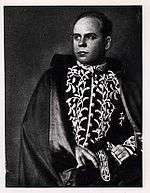

.jpg)

